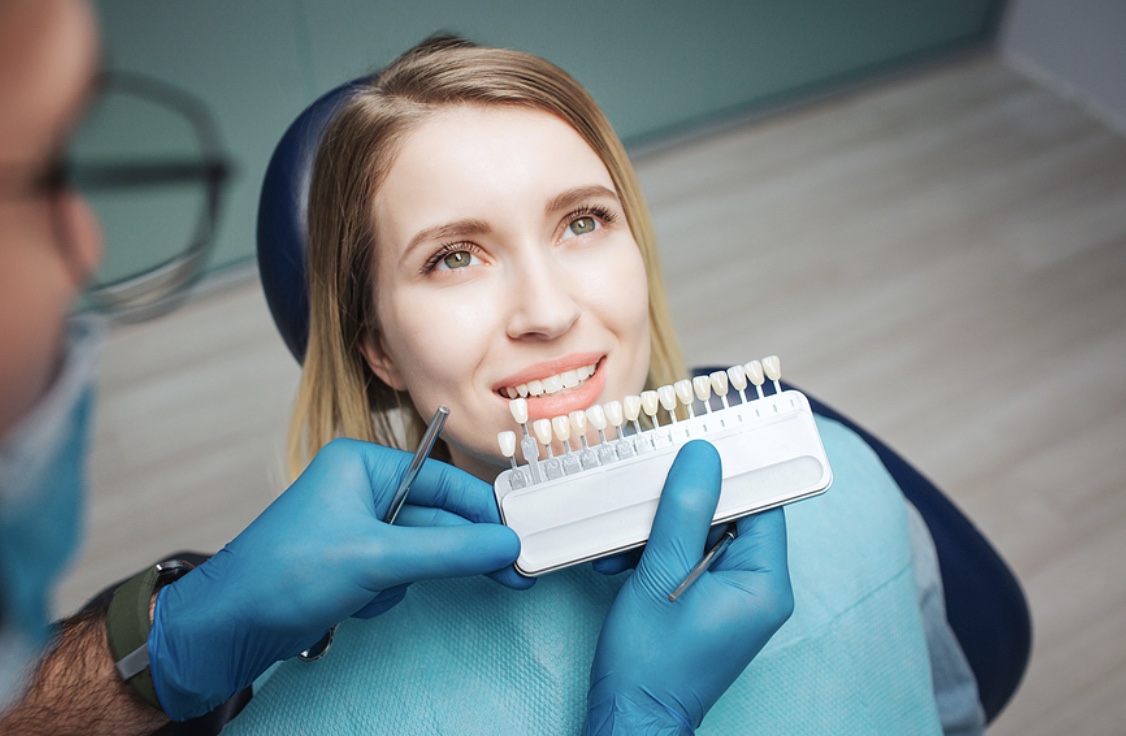Are your teeth stains too deep to remove with natural remedies? If so, a laser whitening treatment is your only hope of restoring the shine of your smile, as well as your confidence. Once the bleaching agent penetrates the enamel, laser light induces a process of oxidation, crucial for getting rid of the stains.
Nowadays, there is an abundance of enamel-safe whitening products online, like the Snow All-in-One Teeth Whitening At Home System Gift Set, whose formula is backed up with LED technology. These products are designed to imitate the effects of professional whitening.
The following guide will introduce you to the process.
Causes of teeth stains
Tooth staining is incredibly common among individuals of all ages, manifested in the form of extrinsic and intrinsic stains. Extrinsic stains affect the enamel, generally caused by teeth-staining drinks and foods, as well as tobacco. Conversely, intrinsic stains are more invasive, penetrating the enamel and reaching the dentin. Also, the dentin naturally becomes discolored with age. Due to the thinning of the enamel, the dentin becomes exposed.
In addition, the main culprits of tooth discoloration are certain foods and drinks high in acids and dark in pigment. Consequently, red wine, dark cola, coffee, black tea, fruit juices, and energy drinks are known to cause stains. As far as foods are concerned, blueberries, blackberries, pomegranates, grapes, beets, cranberries, and tomato sauce are considered enemies of teeth whiteness.
Moreover, tobacco is another common cause of discoloration due to the presence of two harmful chemicals, nicotine and tar. While tar has a naturally dark color, nicotine becomes yellowish once it comes in contact with oxygen. Otherwise, it’s completely colorless.
Medications are also responsible for tooth discoloration in adults, especially antihistamines and those prescribed for hypertension. Children taking certain antibiotics in the course of teeth formation are at risk of experiencing discoloration when becoming adults. Read here about the medications capable of causing tooth discoloration.
In the event of intrinsic stains, individuals can try a variety of natural remedies to eliminate the yellowish or brownish shade. Nevertheless, natural methods like oil pulling, baking soda, charcoal, white vinegar, strawberries, and pineapples can’t do wonders about extrinsic stains, especially those caused by trauma and medications. In such cases, the most effective alternative for patients is getting their teeth professionally whitened.
How does the whitening process go?
After scheduling an appointment at the dentist, he/she will perform a dental examination in order to evaluate the condition of your oral health. In case the dentist discovers a potential issue such as a sign of gum disease, he/she will devise a treatment plan for a fast solution.
In the course of a dental examination, the dentist also pays close attention to the existing color of the patient’s teeth. He/ She is equipped with a shade chart, designed to represent a vast assortment of tooth shades. The majority of tooth shade guides consist of four main categories, each category containing multiple tones.
For instance, category A ranges between reddish and brown shades, while category B ranges between reddish and yellow colors. Category C includes grey shades, while category D consists of grey-reddish tones. After taking a detailed look at your teeth, the dentist will show you your existing color in the shade guide, as well as the shade you’ll get once the whitening treatment is over.
After selecting the right shade, it’s time for the dentist to prep your teeth for the bleaching process. He/ She will use a special disinfectant solution to disinfect your oral cavity, making all debris and plaque is removed from the surface of the teeth, as well as between them. Such cleaning is of crucial importance for impeding cross-infection and other dental issues. The dentist will most likely take a picture of your teeth for the purpose of comparing their whiteness before and after the procedure.
The following step involves using multiple instruments for protecting the lips and gums during the treatment. Given the bleaching agents might cause damage to the gums and lips, it’s paramount for these to be protected while the process lasts. For example, lip retractors are placed inside the mouths of patients, which hold the lips wide open for dentists to have better access to the oral cavity.
Another commonly used instrument during whitening treatment is the saliva ejector, whose role is to remove the liquids from the mouths of patients. This device comes in a form of straw, drawing saliva with the help of suction. Cotton balls are also placed inside the oral cavity for better moisture control.
For better gum protection, dentists use a gingival barrier, referring to a special photo-sensitive material. After being applied to the gums, the material hardens when it comes in contact with LED light or UV light. Such protection is vital for impeding gum irritation caused by strong bleaching gels.
Once the practitioner has installed all the necessary devices, he/she applies the bleaching gel to the teeth. It’s usually left to act between fifteen and thirty minutes, depending on the expected shade. Laser treatments include shining blue laser light directed at the teeth, which enhances the effect of the whitening gel in the course of stain pigment removal. You’ll be given protective goggles to wear so as to prevent your eyes from harm throughout the treatment.
Following the ultimate gel application, all of the protective instruments are removed in order for patients to rinse their mouths with water. The dentist will immediately compare the resulting shade with the one you had, even though the real color will be obvious in the following few days. Unless the shade lives up to your expectations, you can schedule another whitening treatment.
Professional teeth whitening isn’t the best alternative for individuals with allergies to bleaching agents, as well as pregnant women. Also, people suffering from gum inflammation aren’t advised to undergo such a procedure in spite of the use of protective devices.
The bottom line
Professional whitening is the best solution for extrinsic stains!






